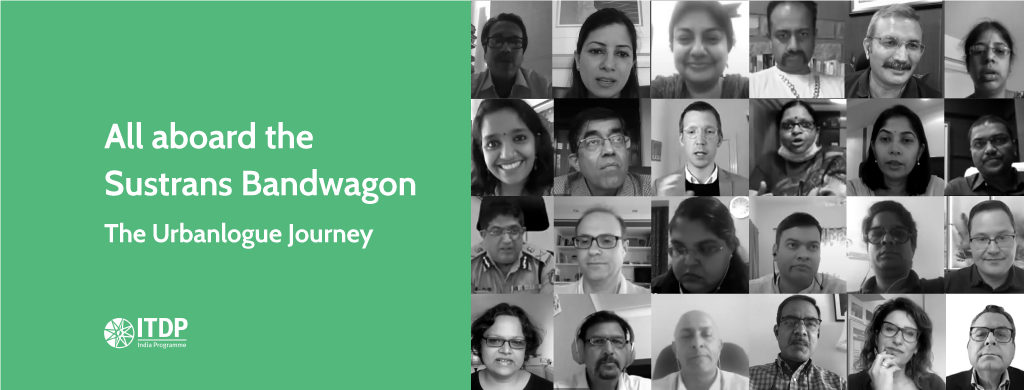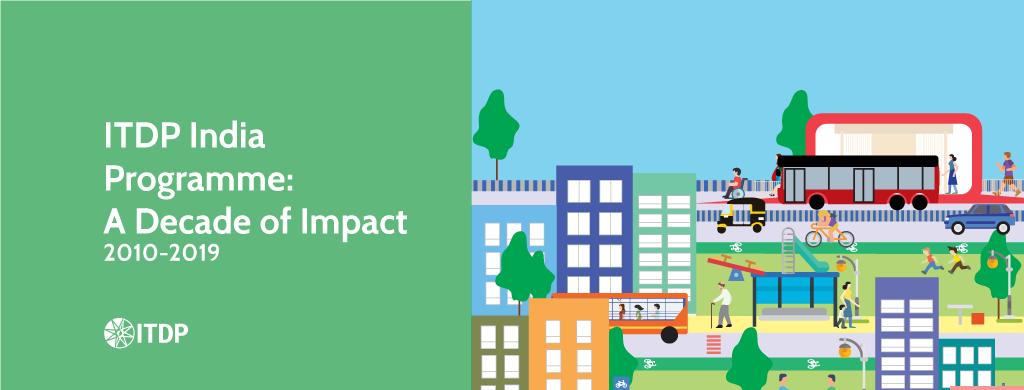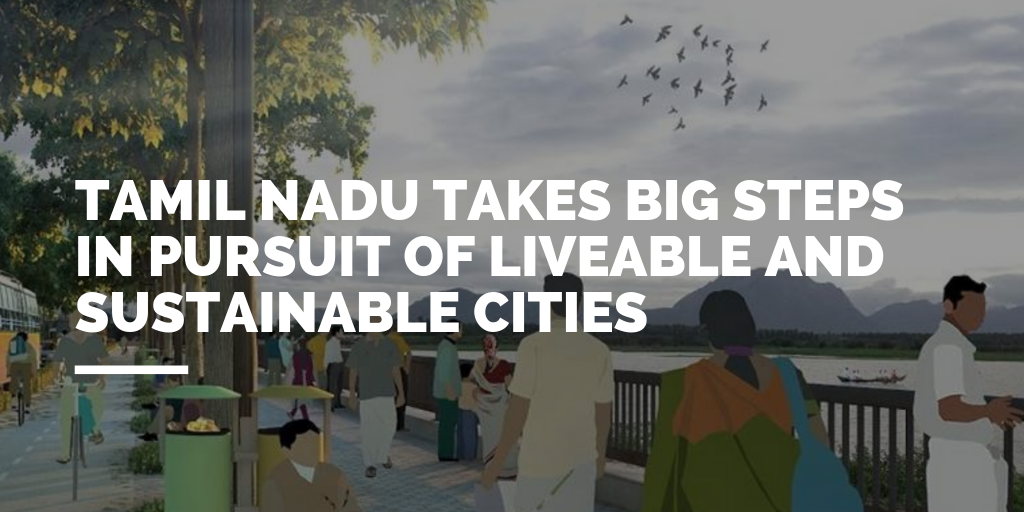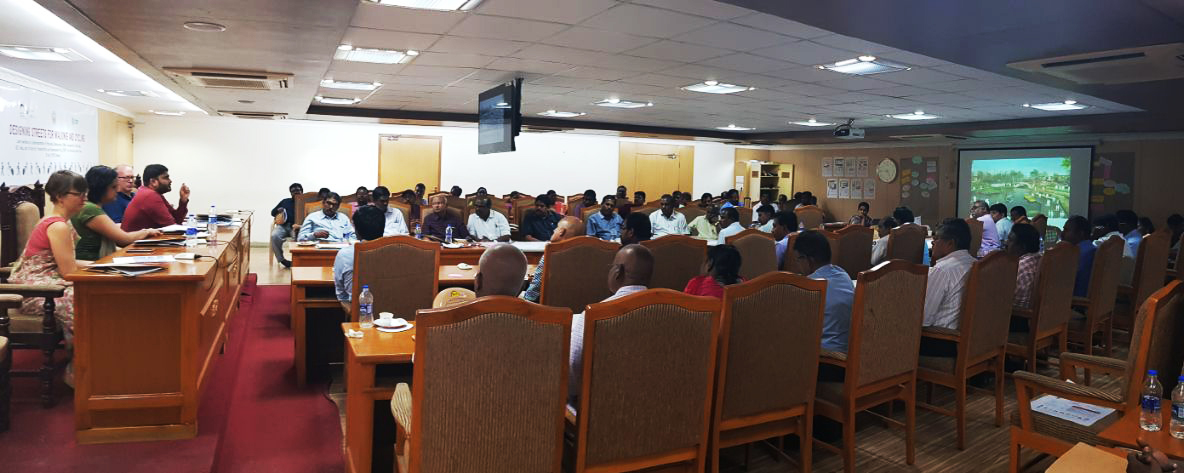When COVID-19 started to take over the world, little did one imagine an entire planet would come to a grinding halt to contain the virus. Public transport services were affected worldwide, motorists no longer on the streets, people began to move differently, both within the confines of their house and outside of it. The crisis gave birth to an opportunity, and as people embraced walking and cycling again, and realised the important role played by public transport, ITDP India Programme launched the Urbanlogue Series 2, to shape and influence a more sustainable, resilient, and inclusive recovery for the country from COVID-19.
What is Urbanlogue?
Over the last 20 years, the ITDP India Programme has been working to transform urban transport systems across the country with improvements in walking, cycling, and public transport infrastructure. This gradual change has been facilitated by inspired political leadership, innovative city officials, and active participation and support from citizens and civil society organisations.
With the primary objective to scale up this transformation to the whole country, the ITDP India Programme launched the Urbanlogue Capacity Development Programme. The focus of the programme has been on offering knowledge to help officials expand their horizons from the perspective of sustainable mobility. We’ve been actively working towards capacity development and holding training workshops for officials from numerous corporations and planning committees. Over the last decade, the ITDP India Programme has trained over 3000 government officials, engineers, stakeholders, and practitioners in over 50 workshops and over 20 study tours.
In 2019, we decided to take Urbanlogue digital with the first Urbanlogue webinar series launched in July comprising eight episodes focussed on creating a roadmap to sustainable mobility for India. Urbanlogue Webinars – Series One received great support, reaching an audience of nearly 2500 public officials, professionals, students, and urban enthusiasts across the country.

The webinars included experts from the ITDP India Programme and other governmental and civil society organisations. Some of them included Shreya Gadepalli, South Asia Programme Lead of ITDP India Programme, Rutul Joshi from CEPT University, Abhijit Lokre, co-founder of The Urban Lab, Sanskriti Menon from the Centre for Environment Education, and Raj Cherubal of the Chennai Smart City Limited, among others.

COVID-19 and Urbanlogue
In 2020, the COVID-19 pandemic brought our cities to a grinding halt. As countries around the world introduced lockdowns, streets turned empty, cars disappeared, public transport systems shut down, and people were forced to stay home. The crisis is not just a health crisis, but an economic crisis as well. It is crucial to ensure a green, equitable, and inclusive recovery as cities look to bounce back from the pandemic’s impact. In order to shape India’s green recovery for the transport sector, the Smart Cities Mission (SCM), Ministry of Housing and Urban Affairs (MoHUA) launched the Urbanlogue Webinars – Series Two in partnership with the ITDP India Programme. The Transport & ICT Group of the World Bank and the Deutsche Gesellschaft für Internationale Zusammenarbeit GmbH (GIZ) were knowledge partners on this series.

In its second avatar, the six episode-series saw over 5500 registrations from 180 Indian and international cities. While city officials were the primary target audience, the series also witnessed widespread participation from consultants, researchers, students, members of civil society organisations, foundations, and financial institutions.
In order to spur the conversations around green recovery and suggest the best practices for travel in a post-COVID era, the webinars covered topics ranging from COVID-safe transport solutions and the need for street interventions to expand space for cycling and walking, to digital innovations for formal and informal public transport. The series brought together a host of experts from the governmental and non-governmental spheres for the webinar, including Kunal Kumar, Joint Secretary of the Smart Cities Mission, MoHUA, Gerald Ollivier, Lead Transport Specialist at the World Bank, Peter Broytman of the Senate Department of Environment, Transport, and Climate Protection in Berlin, Swati Khanna, Senior Sector Specialist, Urban Development and Mobility at KfW, and Mohammed Mezghani, Secretary-General of the International Association of Public Transport (UITP), among others.

Building on the immense success of the webinars and the massive response from a diverse audience, the Smart Cities Mission, Ministry of Housing and Urban Affairs and to initiate the on-ground transformation for a green recovery, the Smart Cities Mission, MoHUA launched two national initiatives—the India Cycles4Change Challenge and the Streets for People Challenge—to improve cycling and walking across the country. The ITDP India Programme is the knowledge partner for the Smart Cities Mission to conduct the two Challenges.
Urbanlogue Podcasts: Taking the next step
Over the two webinar series, Urbanlogue has featured more than 45 sustainable transport experts. Building on these conversations, the ITDP India Programme launched the most recent addition to the Urbanlogue programme—the Urbanlogue Podcast—in August 2020 to take the digital dialogue forward. Keeping the focus on actionable knowledge intact, the podcast is aimed at inspiring action to address the various challenges to the development of sustainable transport initiatives across the country. The podcast is the next step to reach new and diverse audiences in the Urbanlogue journey of transforming our cities for a more sustainable future.
Written by Avishek Jha
Edited by Keshav Suryanarayanan


























